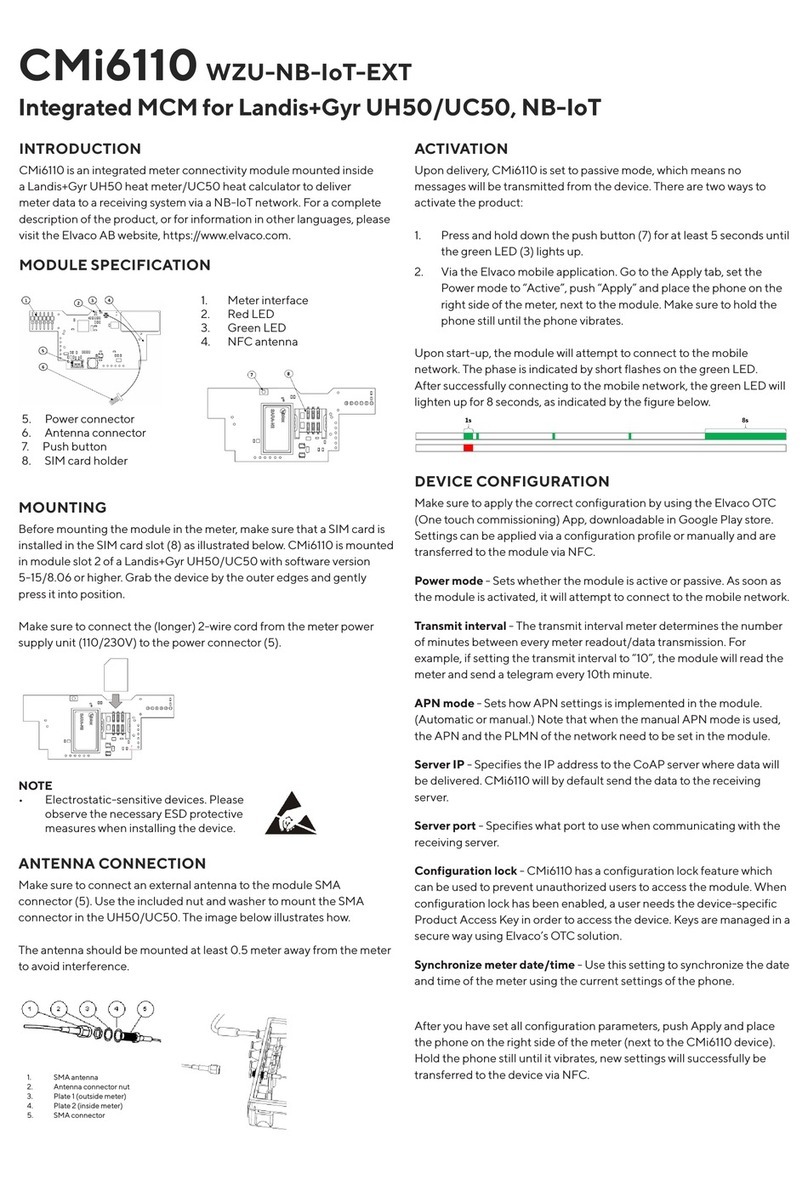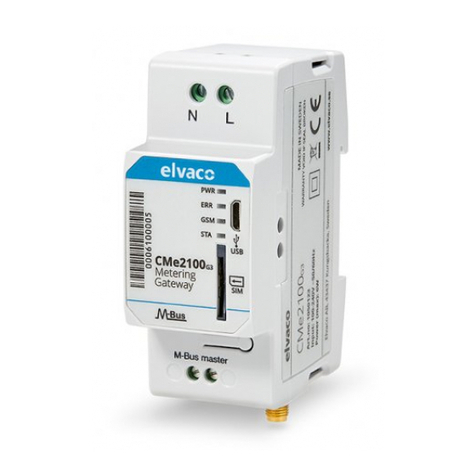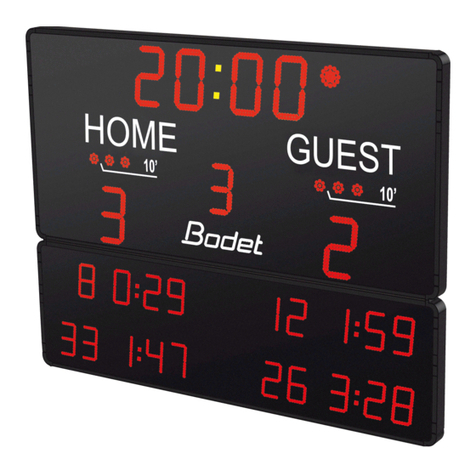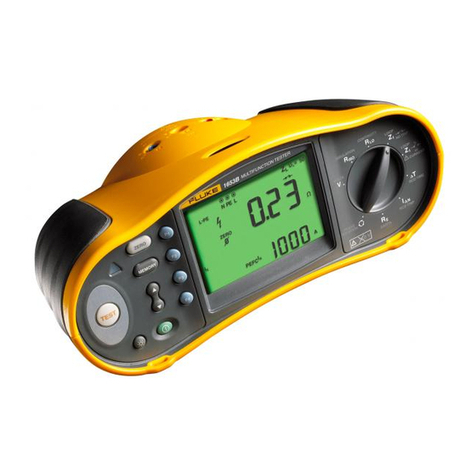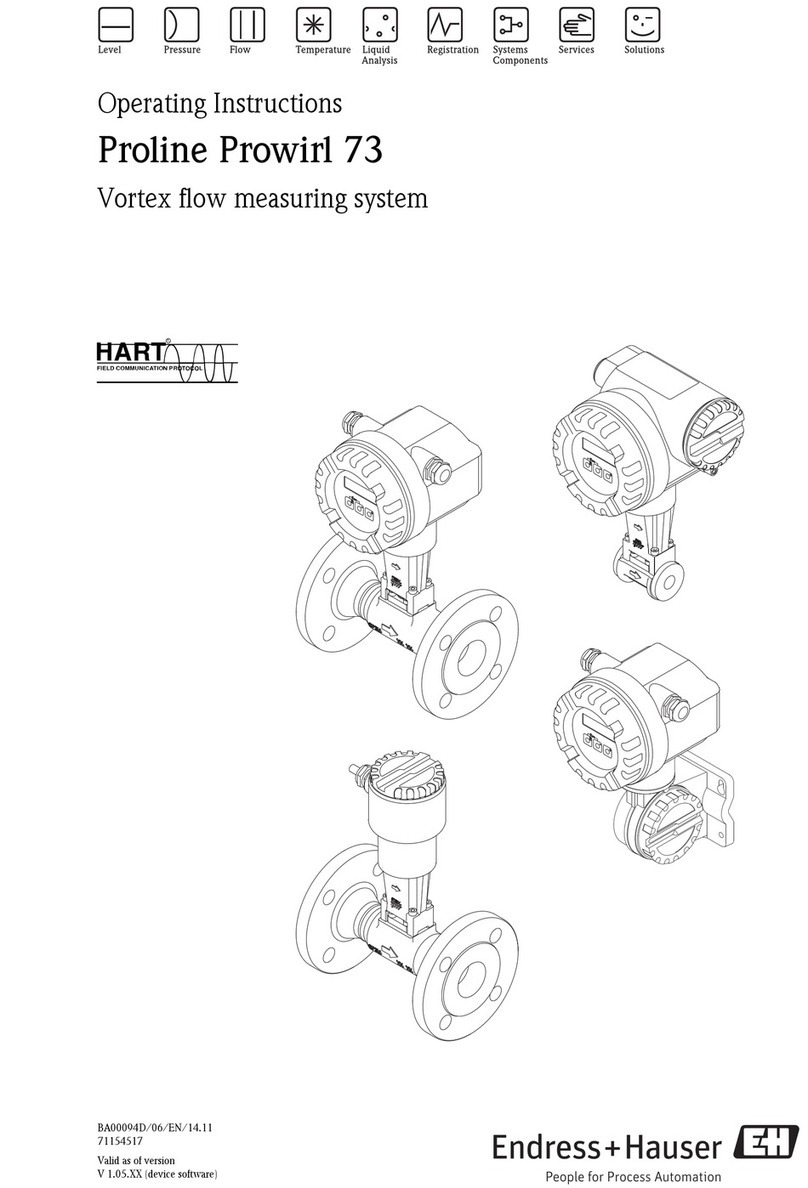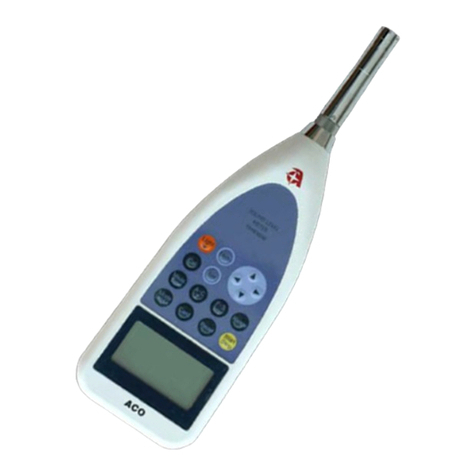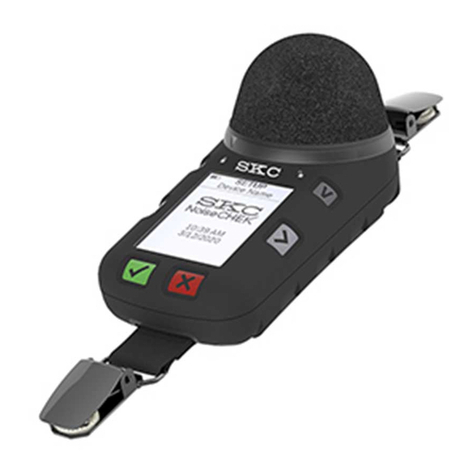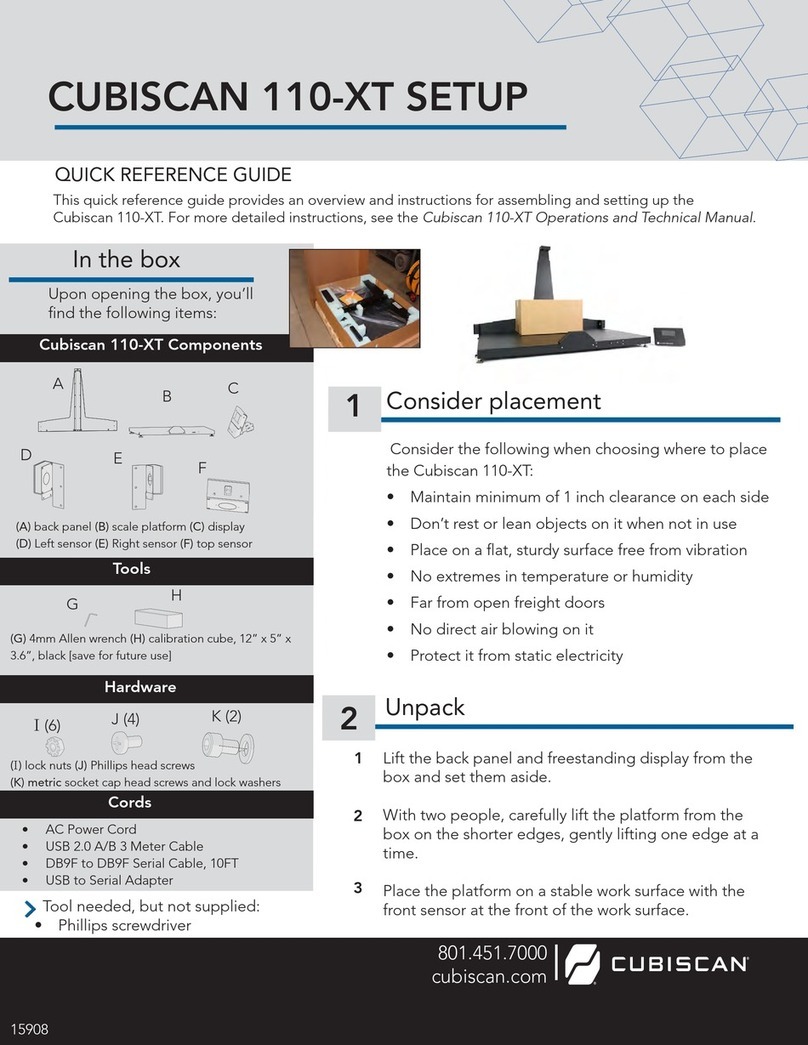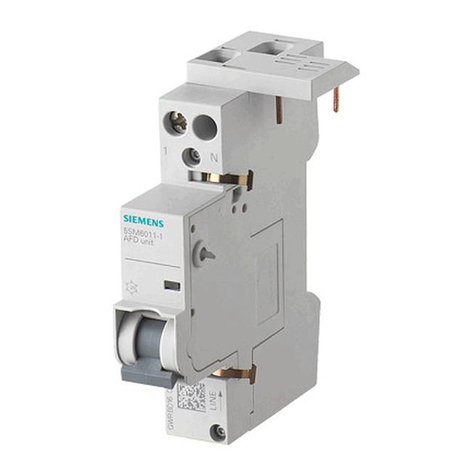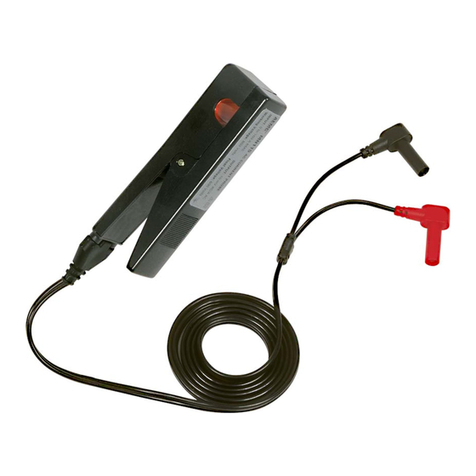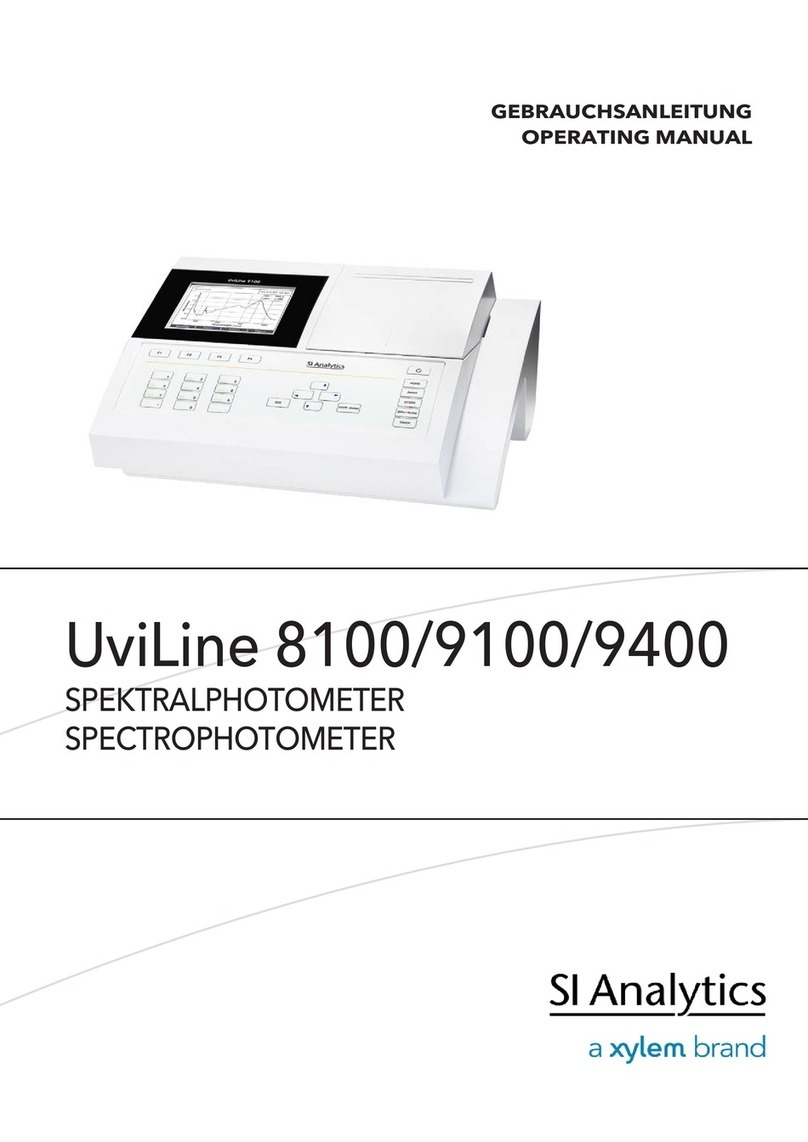Elvaco CMi4170 User manual

CMi4170
User manual

1.3 Edition
Copyright © 2023 Elvaco AB
All rights reserved. No part of the contents of this manual may be transmitted or reproduced in any form
by any means without the written permission of Elvaco AB. Printed in Sweden.
All trademarks and copyrights are acknowledged.
The contents of this manual, including product data, diagrams, charts, etc. represent information on
products at the time of publication and are subject to change without prior notice. It is therefore
recommended to contact Elvaco AB for the latest product information before purchasing the product.
The documentation and product are provided on an “as is” basis only and may contain deficiencies or
inadequacies. Elvaco AB takes no responsibility for damages, liabilities, or other losses resulting from
the usage of this product or manual.

Table of Contents
1. About this manual ............................................................................................................ 4
1.1. Symbols ................................................................................................................. 4
1.2. Terms and abbreviations .......................................................................................... 4
2. Safety ............................................................................................................................... 5
3. Product ............................................................................................................................ 6
3.1. Application description ............................................................................................. 6
3.2. Features ................................................................................................................. 6
3.3. Compatibility ........................................................................................................... 6
3.4. Parts overview ........................................................................................................ 7
4. Installation ....................................................................................................................... 8
4.1. Mounting the module ............................................................................................... 8
4.2. Activating the module .............................................................................................. 8
4.3. Joining the LoRaWAN network ................................................................................. 9
5. Operation ....................................................................................................................... 10
5.1. Server configuration .............................................................................................. 10
5.2. Configuration ........................................................................................................ 10
5.3. Transmit interval .................................................................................................... 11
5.3.1. Transmit interval in EcoMode ...................................................................... 11
5.4. Time handling ....................................................................................................... 12
5.5. Adaptive data rate (ADR) ....................................................................................... 12
5.6. Message encoding ................................................................................................ 12
5.7. Security and access control ................................................................................... 13
5.8. Meter communication error messages .................................................................... 13
5.9. Reset procedures .................................................................................................. 13
5.9.1. Rebooting the module ................................................................................. 13
5.9.2. Switching off the module ............................................................................. 13
6. Configuration options .................................................................................................... 14
6.1. Elvaco OTC app configuration options .................................................................... 14
6.2. Downlink configuration options ............................................................................... 15
6.3. Message formats ................................................................................................... 16
6.3.1. Unscheduled message formats ................................................................... 16
6.3.2. Scheduled message formats ....................................................................... 19
7. Technical specifications ................................................................................................. 28
8. Simplified Declaration of Conformity ............................................................................. 30
9. Document history ........................................................................................................... 31
CMi4170
3

1. About this manual
This manual covers information needed to mount, install, configure, and use the product. It is intended
for installers and system integrators.
To download the latest version of this User manual, visit the Elvaco website, https://www.elvaco.com.
There you will also find information about Elvaco’s other products and services.
1.1. Symbols
The following symbols are used throughout the manual to emphasize important information and useful
tips:
WARNING
Indicates a potentially dangerous situation that could result in severe injuries or serious equipment damage.
CAUTION
Indicates a potentially dangerous situation that could result in minor injuries or equipment damage.
NOTE
Indicates information that is important to take into consideration for safety reasons or to assure correct operation of
the product.
TIP
Indicates information intended to help you get the most out of your product. It can for example be used to highlight a
possible customization option related to the current section.
1.2. Terms and abbreviations
Abbreviation Description
DIB Data Information Block
DIF Data Information Field
VIF Value Information Field
MCM Meter Connectivity Module
Number representation
• Decimal numbers are represented as normal number, i.e. 10 (ten)
• Hexadecimal numbers are represented with prefix 0x, i.e. 0x0A (ten)
• Binary numbers are represented with the prefix 0b, i.e. 0b00001010 (ten)
European standards
M-Bus standard EN 13757-3:2013: Communication systems for and remote reading of meters – Part 3:
Dedicated application layer.
CMi4170
4

2. Safety
The following safety precautions must be observed during all phases of the operation, usage, service,
or repair of the product. Users of the product are advised to convey the following safety information to
users and operating personnel and to incorporate these guidelines into all manuals supplied with the
product. Failure to comply with these precautions violates safety standards of design, manufacture and
intended use of the product. Elvaco AB assumes no liability for customer’s failure to comply with these
precautions.
CAUTION
Electrostatic-sensitive product. Observe the necessary ESD protective measures when installing the product.
NOTE
The product receives and transmits radio frequency energy while switched on. Remember that interference can occur
if the product is used close to TV sets, radios, computers or inadequately shielded equipment. Follow any special
regulations and always switch off the product wherever forbidden, or when you suspect that it may cause interference
or danger.
NOTE
Waste electrical products should not be disposed of with household waste. Please recycle where facilities exist.
Contact your Local Authority for recycling advise.
CMi4170
5

3. Product
3.1. Application description
CMi4170 is a meter communication module mounted inside a Engelmann Sensostar S3/S3C to deliver
meter data to a receiving server via a LoRaWAN network. The module is energy-efficient and has
eleven years battery life. It can be retrofitted into deployed meters and is ideal for applications where
long range is required. CMi4170 is easily configured through Elvaco OTC mobile app. With CMi4170,
Elvaco offers a meter communication module designed for customers that require a user-friendly and
cost-effective solution.
3.2. Features
CMi4170 offers a combination of battery operation with long lifetime and a versatile application through
its many configuration options. Key features of the module include:
•Extensive battery lifetime
The module’s EcoMode feature enables the module to achieve a battery-lifetime of 6+1 or 10+1 years
with a new internal meter battery (“+1” refer to 1 year of storage).
•Easy start-up
As soon as the meter connectivity module is mounted in the meter and activated, it will join the
LoRaWAN network.
•Easy and secure commissioning
With Elvaco’s One-Touch Commissioning (OTC), deployment, configuration and key transferring can
be performed in a secure and flexible way.
•Unique and flexible message formats
CMi4170 has several different message formats, this makes it easy to customize the payload to the
unique demands of each application.
3.3. Compatibility
CMi4170 is compatible with Engelmann Sensostar meters with a compatible firmware version. Once the
module is mounted and starts up, a compatibility check is made to ensure that it is compatible with the
meter firmware. If the module is mounted in an incompatible meter, this is indicated in the OTC App.
The meter’s firmware version can be shown in the meter’s display, for further information, refer to the
meter’s manual.
The following table shows the minimum firmware versions required.
Table 1. CMi4170 - Meter firmware compatibility
Meter Minimum firmware version
Engelmann SensoStar S3 103/14
Engelmann SensoStar S3C 100/5
CMi4170
6

3.4. Parts overview
1. Green LED
2. Red LED
3. Interface connector
4. Push button
5. Pulse input
6. LoRaWAN antenna
NOTE
The NFC antenna is integrated in the edge of the PCB.
CMi4170
7

4. Installation
4.1. Mounting the module
CMi4170 is mounted in an Engelmann Sensostar S3/S3C meter.
1. Grab the device by the outer edges.
2. Gently press it into postition in the module slot.
• Make sure that the module's push button (2) is facing upwards.
• Make sure that interface connector of the meter (1) fits the interface connector of the module (3).
Engelmann Sensostar (left), CMi4170 (right)
4.2. Activating the module
Upon delivery, CMi4170 is set to passive mode, which means no messages will be transmitted from the
module. The module can be activated in one of the following ways:
Via the module push button
1. Press down the push button of the module for at least five seconds.
2. Release when the green LED lights up.
3. Wait for one to eleven seconds.
The module indicates start-up by flashing red and green LEDs for one second.
Via Elvaco OTC app
1. Open Elvaco OTC app (downloadable via Google Play).
2. Scan the module (make sure NFC is activated on the phone).
3. Go to Apply mode.
4. Set the power mode to “Active”.
5. Select Apply settings.
6. Scan the module to apply new settings.
To verify that the module has been activated, go to the Inspect, scan the module, and make sure
that power mode is set to “Active”.
CMi4170
8

TIP
The NFC field is easiest accessible if placing the phone in the middle part of the front.
Via device monitor
Device monitor refers to Engelmann's optical configuration tool. For more information see Engelmann
documentation.
Via meter menu
Refer to Engelmann documentation.
4.3. Joining the LoRaWAN network
When activated, the product will attempt to join the LoRaWAN network by the following sequence:
1. Red LED – One flash
2. Green and Red LED – Lights simultaneously up for 1 second
3. Green LED – Several flashes while trying to connect to the LoRaWAN network
4. Green LED – Lights up for 8 seconds when module succeeds in joining the LoRaWAN network
The network join sequence is illustrated in the figure below:
Network join LED indication
If the module fails to join the LoRaWAN network, it will perform retries until it succeeds. The time
between each attempt will increase for every attempt until it is performed once every day. A new join
attempt cycle can be manually started anytime by using the push button to reboot the module or by
deactivating and activating the module using the Elvaco OTC App.
When the module has joined the LoRaWAN network, it will perform three quick transmissions (regard-
less of transmit interval settings) before starting to use its configured transmit interval settings. By using
the Elvaco OTC App, you can easily verify that the module is successfully communicating with the
meter (“Meter communication”) and is connected to the LoRaWAN network (“Network joined”).
CMi4170
9

5. Operation
5.1. Server configuration
There are two different activation types for LoRaWAN - Over-the-air activation (OTAA) and Activation by
personalization (ABP). Elvaco strongly recommends using OTAA, where all network keys are generated
each time the module joins the LoRaWAN network. In contrast, for ABP, all keys are set manually and
stay constant over time.
In OTAA mode
Before the module is able to transmit messages via the LoRaWAN network, device information needs
to be added to the network server. More specifically, the following parameters needs to be registered in
order to enable the network server to receive messages from the module:
Device EUI
The device EUI is a 16 digit module unique identification number. It is not configurable.
Application key
The application key of each device is generated by Elvaco and used in OTAA mode to generate
network keys when the module joins the LoRaWAN network. Keys are managed in a secure way
using Elvaco’s OTC (One Touch Commissioning) solution which includes the mobile application for
configuration.
Join EUI
The Join EUI sets the identification number of the application server where data from the module shall
be delivered. The identification number is set to a default value in all devices. The default value is
presented in Elvaco OTC configuration options.
In ABP mode
If the activation mode is set to ABP, the application key does not need to be added to the network
server. Instead the following information will be needed:
• Network session key
• Application session key
• Device address
5.2. Configuration
Via Elvaco OTC app
The module is configured via the Elvaco OTC app. The app uses NFC to transfer settings to the
module. It is compatible with iPhone or Android phones with Android 5.0 or later. The OTC app can be
downloaded from Google Play for Android and App Store for iOS.
It is possible to create a configuration profile to apply preconfigured settings to multiple devices. For
further information, refer to the OTC app documentation, available on the Elvaco website.
1. Open the Elvaco OTC app on your smartphone.
2. Place your smartphone close to the device and press SCAN.
3. After a successful scan, the current settings will be displayed on the INSPECT tab.
4. To change settings, go to the APPLY tab. Use the toggle button to activate an option, and make
your changes.
5. When done with changes press APPLY at the bottom of the screen, then Apply settings. Repeat
step 2 to change the settings in the device.
CMi4170
10

A successful change is acknowledged by a vibration.
TIP
The NFC field is easiest accessible if placing the phone in the middle part of the front.
Via downlink
The product supports configuration via downlink, i.e. sending commands to an end-device via the
LoRaWAN network. Communication via downlink is sent on LoRa port 2 and can only be made in a
short window after an uplink transmission from module to server. Therefore, time-critical communication
should not be performed over downlink.
Downlink commands are structured according to the following format: “0x00” "TLV" "Number of bytes in
configuration" "Configuration".
NOTE
This feature should only be used sparingly due to bandwidth consideration.
5.3. Transmit interval
The transmit interval is used to set how frequently the module should transmit data on the LoRaWAN
network. The parameter can be set to a value between 5 and 1440 minutes (i.e. between 5-minute and
daily values).
5.3.1. Transmit interval in EcoMode
When EcoMode is active, the module has a battery lifetime of 6+1 or 10+1 years, depending on what
EcoMode alternative is set. EcoMode setting is ignored when PSU (external power supply Engelmann)
is connected. The module can achieve battery life of 6+1 or 10+1 years by using a table of allowed
transmit intervals settings for each data rate.
When radio conditions are poor (and data rate is low), the module will send data less frequently to
conserve battery-life. When signal conditions are good, the module will send data more frequently.
When EcoMode is enabled, the module will continuously check if the set transmit interval is “allowed”
by the EcoMode table. If a lower transmit interval is needed for the specific data rate to achieve 6+1 or
10+1 years of battery life, the module will adjust the parameter accordingly.
See the following tables for the transmit interval allowed in each data rate.
CAUTION
Anticipated battery lifetime cannot be assured if:
• EcoMode is disabled (Even if EcoMode is activated later)
• Changing from 6+1 to 10+1 years battery lifetime in EcoMode
NOTE
When using the “Engelmann” message format, the transmit interval is doubled to compensate for the additional
telegrams transmitted in this message format, with the exception of DR0 in 10 year EcoMode where the transmit
interval is capped at 1440 minutes (corresponding to once every 24 hours).
Table 2. EcoMode transmit interval settings, EcoMode (6 years)
Data rate Transmit interval (minutes) Transmit interval, Engelmann mes-
sage format (minutes)
DR0 180 360
DR1 120 240
DR2 60 120
DR3 30 60
CMi4170
11

Data rate Transmit interval (minutes) Transmit interval, Engelmann mes-
sage format (minutes)
DR4 15 30
DR5 15 30
Table 3. EcoMode transmit interval settings, EcoMode (10 years)
Data rate Transmit interval (minutes) Transmit interval, Engelmann mes-
sage format (minutes)
DR0 1440 1440
DR1 360 720
DR2 180 360
DR3 120 240
DR4 90 180
DR5 60 120
5.4. Time handling
The module relies on the meter’s clock for keeping time. Time in the meter is assumed to be in standard
local time (no DST). When synchronizing time in the meter using the OTC App, local standard time
is always used, even if DST is in effect. The timestamped meter data sent from the module can be
adjusted to be sent in UTC by specifying the “UTC offset” configuration parameter. The UTC offset will
be subtracted from the timestamp prior to transmission. If the meter is in Sweden, which uses CET
(Central European Time), it should have UTC offset set to +60 (+1h). In this case at time 12.00 a
telegram is sent with timestamp 11.00 as this is the corresponding UTC time. A meter in New York
(USA) should have a UTC offset of -300 (-5h) etc. A UTC offset of 0 means the meter time is used
as-is.
If the meter is set to used DST this is ignored by the module and the standard time is used. Thus, the
time on the meter’s display may not match the time in the telegram or in the OTC App.
5.5. Adaptive data rate (ADR)
ADR is part of the LoRaWAN standard where the network server determines the optimal rate of
communication for the module based on current signal conditions. In the best radio conditions, the
module will use its highest data rate (DR5) in order to be as energy-efficient as possible. When signal
conditions are poor, the network server will incrementally lower the data rate until it is able to receive
the message. When the data rate is low, the energy consumption per telegram will increase.
5.6. Message encoding
All message formats encoded to M-bus standard will have the following structure. Each telegram begins
with one byte specifying the message format. Then follows a sequence of data information blocks
(DIBs). The data and structure of the DIBs depends on the message type set. Each DIB contains a data
information field (DIF), a value information field (VIF) and a data field (DATA), where the actual payload
is stored.
CMi4170
12

M-Bus message structure
For message type JSON, the data is presented as plain text.
5.7. Security and access control
The product has a configuration lock feature, which prevents unauthorized access to the module. When
configuration lock has been enabled, a device-specific Product Access Key (PAK) will be needed to
access the device. Keys are managed in a secure way using Elvaco’s OTC solution which includes the
mobile application for configuration.
NOTE
For more information about security and access control for the product, refer to the One-touch commissioning (OTC)
documentation, available on the Elvaco website.
5.8. Meter communication error messages
The payloads using M-Bus encoded data uses the Function field of the DIF to indicate errors. In this
case it is set to “value during error state” (M-Bus standard EN 13757-3:2013) and the value sent should
not be used. A typical case for this is when the module is unable to communicate with the meter and
retrieve meter values, in which case all the fields in the payload have the DIF indicating “value during
error state”. In case of erroneous data or if the module is unable to communicate with meter, bit 4-5 of
the bit of the DIF code (first byte of each index field) will be set to 11b.
Example 1. Example
A DIF code of 0x02 will be set to 0x32 in case of error. (This applies to all message format except
JSON.) For message format JSON, the actual value will be replaced with “null” in case of error state. If
no meter communication is possible at all, all fields have this error indication set.
5.9. Reset procedures
5.9.1. Rebooting the module
1. Press and hold the push button for 5-15 seconds.
2. Release the button when the green LED is lit.
5.9.2. Switching off the module
1. Press and hold the push button for 15-20 seconds.
2. Release the button when the red LED is lit.
CMi4170
13

6. Configuration options
6.1. Elvaco OTC app configuration options
Table 4. All configuration options
Field name
(Abbr.)
Description Default value Locked de-
vice
&
correct Prod-
uct Access
Key
or
open device
Locked de-
vice
&
no Product
Access Key
Downlink
Meter ID Meter identification number
of the meter. Not configura-
ble.
N/A Readable Readable N/A
Power mode Used to activate/deactivate
the module.
Passive Readable /
Writeable
Readable N/A
EcoMode When activated, a minimum
battery-life of 6+1 or 10+1
years depending on the
configuration) can be ach-
ieved by the module.
10 years Readable /
Writeable
Readable Writeable
Message for-
mat
The message format deter-
mines the meter data inclu-
ded in the telegram from the
module.
0x24 (Stand-
ard)
Readable /
Writeable
Readable Writeable
Transmit inter-
val
Sets the number of minutes
between each transmission
from the module.
60 minutes Readable /
Writeable
Readable Writeable
Date & Time Date and time of the meter. N/A Readable /
Writeable
Readable N/A
Set Time Rel-
ative
Adjusts the time of the me-
ter relative to the current
time.
N/A N/A N/A Writeable
Set absolute
time
Sets the time of the meter Writeable N/A N/A N/A
Configuration
Lock
Locks the module to prevent
unauthorized access.
Open Readable /
Writeable
Readable Writeable
Pulse input
selection
Select which of the three
pulse inputs to include when
using the Engelmann mes-
sage format. One or more
can be selected.
0x00 (None) Readable /
Writeable
Readable Writeable
LoRaWAN settings
Device EUI Unique module identification
number. Not configurable.
Device-unique
64-bit number
Readable Readable N/A
Activation type Sets the way the device
joins the LoRaWAN net-
work.
OTAA Readable /
Writeable
Readable Writeable
Network join Used to display whether the
module has joined the LoR-
aWAN network
N/A Readable Readable N/A
Join EUI Application identifier that de-
termines where data ends
up.
94193A030C0
00001
Readable /
Writeable
Readable Writeable
Device ad-
dress
32-bit address used by the
device to identify itself on
the LoRaWAN network.
N/A Readable /
Writeable
Readable Writeable
CMi4170
14

Field name
(Abbr.)
Description Default value Locked de-
vice
&
correct Prod-
uct Access
Key
or
open device
Locked de-
vice
&
no Product
Access Key
Downlink
Current data
rate
The current data rate used
for the module.
N/A Readable Readable N/A
6.2. Downlink configuration options
Table 5. Downlink commands
Field name TLV Number
of bytes
in con-
figura-
tion
Configuration Example
Configura-
tion lock
0x05 0x01 0x00 = Locked
0x01 = Open
0x00050101
(Enables configuration lock)
Transmit in-
terval
0x06 0x02 0xNumber of minutes between transmission
(lsByte -> msByte)
0x0006021E00
(Sets the Tx interval to 30 minutes)
Message
format
0x07 0x01 0x24 = Standard
0x25 = Compact
0x26 = JSON
0x27 = Scheduled-daily redundant
0x28 = Scheduled - Extended
0x29 = Combined heat/cooling
0x2C = Engelmann
0x0007010XX
(Sets the message format to com-
pact)
EcoMode 0x0F 0x01 0x00 = Disable EcoMode
0x01 = Enable EcoMode, 10 years
0x02 = Enable EcoMode, 6 years
0x000F0100
(Disables EcoMode)
Set Time
Relative
0x13 0x02 0xNumber of minutes* (lsByte -> msByte)
*Negative numbers supported.
0x0013020F00 (Adds 15 minutes
to the current time)
0x0013020F80 (Subtracts 15 mi-
nutes from the current time)
UTC offset 0x17 0x02 0xNumber of minutes* (lsByte -> msByte)
*Negative numbers supported.
0x0017023C00 (Sets the UTC off-
set to +60 minutes)
0x0017023C80 (Sets the UTC off-
set to -60 minutes)
Reboot 0x22 0x02 0x9E75 is used to reboot device 0x0022029E75
(Reboots the device)
CMi4170
15

Field name TLV Number
of bytes
in con-
figura-
tion
Configuration Example
Pulse input
selection
0x1D 0x01 Bit flags for selecting which pulse inputs are
to be included in the Engelmann message
format.
0 = disabled, 1 = enabled
Bit 0: Input 1
Bit 1: Input 2
Bit 2: Input 3
Bits 3-7 are reserved and shall be set to 0.
0x001D0101
(Only input 1)
0x001D0107
(Input 1, 2 & 3)
6.3. Message formats
CMi4170 has several different message formats.
Table 6. CMi4170 Message formats
Field Size Description
Message format 1 byte 0x24 = Standard
0x25 = Compact
0x26 = JSON
0x27 = Scheduled – daily redundant
0x28 = Scheduled - Extended
0x29 = Combined heat/cooling
0x2C = Engelmann telegram 1
0x2D = Engelmann telegram 2*
*Engelmann telegram 2 cannot be selected as a telegram type. It is the ID of the second telegram when
using message format Engelmann.
6.3.1. Unscheduled message formats
6.3.1.1. Standard
Table 7. Payload, message format Standard [0x24]
DIB Field Size Data type Description
0 Message for-
mat
1 byte - 0x24 (= Standard)
CMi4170
16

DIB Field Size Data type Description
1 Energy 6-7 bytes INT32 Energy consumption (Wh, J, Cal)
0400xxxxxxxx = xxxxxxxx,xxx Wh
0401xxxxxxxx = xxxxxxxx,xx Wh
0402xxxxxxxx = xxxxxxxx,x Wh
0403xxxxxxxx = xxxxxxxx Wh
0404xxxxxxxx = xxxxxxxx * 10 Wh
0405xxxxxxxx = xxxxxxxx * 100 Wh
0406xxxxxxxx = xxxxxxxx kWh
0407xxxxxxxx = xxxxxxxx * 10 kWh
040Exxxxxxxx = xxxxxxxx MJ
040Fxxxxxxxx = xxxxxxxx * 10 MJ
04FB0Dxxxxxxxx = xxxxxxxx MCal
04FB0Exxxxxxxx = xxxxxxxx * 10 MCal
04FB0Fxxxxxxxx = xxxxxxxx * 100 MCal
2 Volume 6 bytes INT32 Volume ( m³ )
0411xxxxxxxx = xxxxxxxx * 0.00001 m³
0412xxxxxxxx = xxxxxxxx * 0.0001 m³
0413xxxxxxxx = xxxxxxxx * 0.001 m³
0414xxxxxxxx = xxxxxxxx * 0.01 m³
0415xxxxxxxx = xxxxxxxx * 0.1 m³
0416xxxxxxxx = xxxxxxxx m³
0417xxxxxxxx = xxxxxxxx * 10 m³
3 Power 4 bytes INT16 Power (W)
022Bxxxx = xxxx W
022Cxxxx = xxxx * 10 W
022Dxxxx = xxxx * 100 W
022Exxxx = xxxx kW
022Fxxxx = xxxx * 10 kW
4 Flow 4 bytes INT16 Flow ( m³/h)
023Bxxxx = xxxx * 0.001 m³/h
023Cxxxx = xxxx * 0.01 m³/h
023Dxxxx = xxxx * 0.1 m³/h
023Exxxx = xxxx m³/h
023Fxxxx = xxxx * 10 m³/h
5 Fw temp 4 bytes INT16 Forward temperature (°C)
0258xxxx = xxxx * 0.001 °C
0259xxxx = xxxx * 0.01 °C
025Axxxx = xxxx * 0.1 °C
025Bxxxx = xxxx °C
CMi4170
17

DIB Field Size Data type Description
6 Rt temp 4 bytes INT16 Return temperature (°C)
025Cxxxx = xxxx * 0.001 °C
025Dxxxx = xxxx * 0.01 °C
025Exxxx = xxxx * 0.1 °C
025Fxxxx = xxxx °C
7 Meter ID 6 bytes According to
M-Bus
EN13757-3
identification
field
Meter ID
0C78xxxxxxxx
8 Error flags 4 bytes INT8 Error and warning flags
01FD17xx
6.3.1.2. Compact
Table 8. Payload, message format Compact [0x25]
DIB Field Size Data type Description
0 Message for-
mat
1 byte - 0x25 (= Compact)
1 Energy 6-7 bytes INT32 Energy consumption (Wh, J, Cal)
0400xxxxxxxx = xxxxxxxx,xxx Wh
0401xxxxxxxx = xxxxxxxx,xx Wh
0402xxxxxxxx = xxxxxxxx,x Wh
0403xxxxxxxx = xxxxxxxx Wh
0404xxxxxxxx = xxxxxxxx * 10 Wh
0405xxxxxxxx = xxxxxxxx * 100 Wh
0406xxxxxxxx = xxxxxxxx kWh
0407xxxxxxxx = xxxxxxxx * 10 kWh
040Exxxxxxxx = xxxxxxxx MJ
040Fxxxxxxxx = xxxxxxxx * 10 MJ
04FB0Dxxxxxxxx = xxxxxxxx MCal
04FB0Exxxxxxxx = xxxxxxxx * 10 MCal
04FB0Fxxxxxxxx = xxxxxxxx * 100 MCal
2 Meter ID 6 bytes According to
M-Bus
EN13757-3
identification
field
Meter ID
0C78xxxxxxxx
3 Error flags 4 bytes INT8 Error and warning flags
01FD17xx
6.3.1.3. JSON
In message format JSON, data is presented on a plain text format.
The following table contains a description of all field included in the telegram.
CMi4170
18

Table 9. Payload, message format JSON [0x26]
Field Description
Energy Energy consumption (Wh, J, Cal)
Unit Unit of energy consumption
Meter ID Identification number of the meter in which the module is mounted.
Below shows an example of a telegram sent using the JSON message format.
{"E":12345.678,"U":"MWh","ID":87654321}
6.3.2. Scheduled message formats
For message formats of type “Scheduled” (Scheduled – Daily redundant and Scheduled – Extended),
two types of messages will be transmitted from the module - a clock message and a data message.
The difference between a clock message and a data message is described in the following table.
Table 10. Clock message and data message
Message Time interval Description
Clock message Once per day The clock message presents the current time of the meter. It
can be used to verify that the clock is correct and has not
drifted more than accepted.
Data message Determined by Transmit in-
terval parameter
The actual meter data collected from the meter.
The following table contains a detailed description of the payload of the clock message.
Table 11. Payload, clock message
DIB Field Size Data type Description
0 Message for-
mat identifier
1 byte - 0xFA (=Clock message)
1 Data/Time 6 bytes 32 bit binary
integer M-Bus
type F
046Dxxxxxx = Valid date/time message
346Dxxxxxx = Invalid date/time message
The clock message will be transmitted once every day and the data message at least (regulated by
transmit interval parameter or EcoMode) once every day. The transmit interval can only be set the
values listed in Table 12, “Transmit interval options ” [19].
Although the meter readout will occur on top-of-the-hour, the data message will not necessarily be
transmitted at that exact time. The LoRa transmission will occur after a random delay of 0-15 minutes
to decrease the risk of collisions. The readout for the clock message occurs at a random hour (00:00-
23:00) at a random minute in the 35-45 interval and will be transmitted immediately after the readout.
NOTE
When using message format Scheduled, the transmit interval cannot not be set to higher than 1440 (24 hours).
Table 12. Transmit interval options
Parameter Values Unit
Transmit interval 60, 120, 180, 240, 360, 480, 720, 1440 Minutes
6.3.2.1. Scheduled - Daily redundant
The data message of Scheduled mode-daily redundant contains an accumulated daily energy field,
which is updated at 24:00 each day. Depending on transmit interval settings and data rate, the field
will be included in between 1-24 data messages per day. This will increase the probability of the value
CMi4170
19

being received. For example, if the transmit interval is set to “120”, the accumulated energy read at
24:00 will be transmitted 12 times during the 24 next coming hours.
Table 13. Payload, message format Scheduled – Daily redundant [0x27]
DIB Field Size Data type Description
0 Message for-
mat
1 byte - 0x27 (= Scheduled – daily redundant)
1 Heat energy
E1 / Cooling
Energy E3
6-7 bytes INT32 Energy consumption (Wh, J, Cal)
0400xxxxxxxx = xxxxxxxx,xxx Wh
0401xxxxxxxx = xxxxxxxx,xx Wh
0402xxxxxxxx = xxxxxxxx,x Wh
0403xxxxxxxx = xxxxxxxx Wh
0404xxxxxxxx = xxxxxxxx * 10 Wh
0405xxxxxxxx = xxxxxxxx * 100 Wh
0406xxxxxxxx = xxxxxxxx kWh
0407xxxxxxxx = xxxxxxxx * 10 kWh
040Exxxxxxxx = xxxxxxxx MJ
040Fxxxxxxxx = xxxxxxxx * 10 MJ
04FB0Dxxxxxxxx = xxxxxxxx MCal
04FB0Exxxxxxxx = xxxxxxxx * 10 MCal
04FB0Fxxxxxxxx = xxxxxxxx * 100 MCal
2 Volume 6 bytes INT32 Volume ( m³ )
0411xxxxxxxx = xxxxxxxx * 0.00001 m³
0412xxxxxxxx = xxxxxxxx * 0.0001 m³
0413xxxxxxxx = xxxxxxxx * 0.001 m³
0414xxxxxxxx = xxxxxxxx * 0.01 m³
0415xxxxxxxx = xxxxxxxx * 0.1 m³
0416xxxxxxxx = xxxxxxxx m³
0417xxxxxxxx = xxxxxxxx * 10 m³
3 Meter ID 6 bytes According to
M-Bus
EN13757-3
identification
field
Meter ID
0C78xxxxxxxx
4 Error flags 4 bytes INT8 Error and warning flags
01FD17xx
CMi4170
20
Other manuals for CMi4170
2
Table of contents
Other Elvaco Measuring Instrument manuals
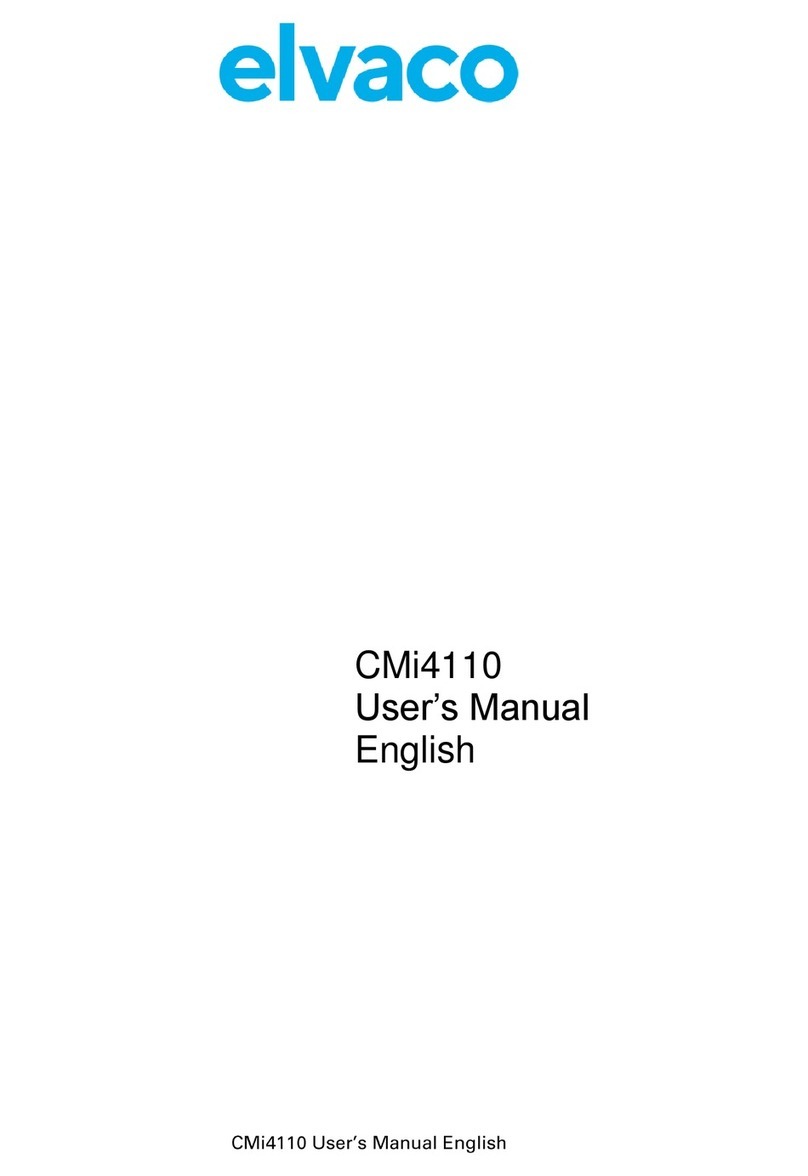
Elvaco
Elvaco CMi4110 User manual
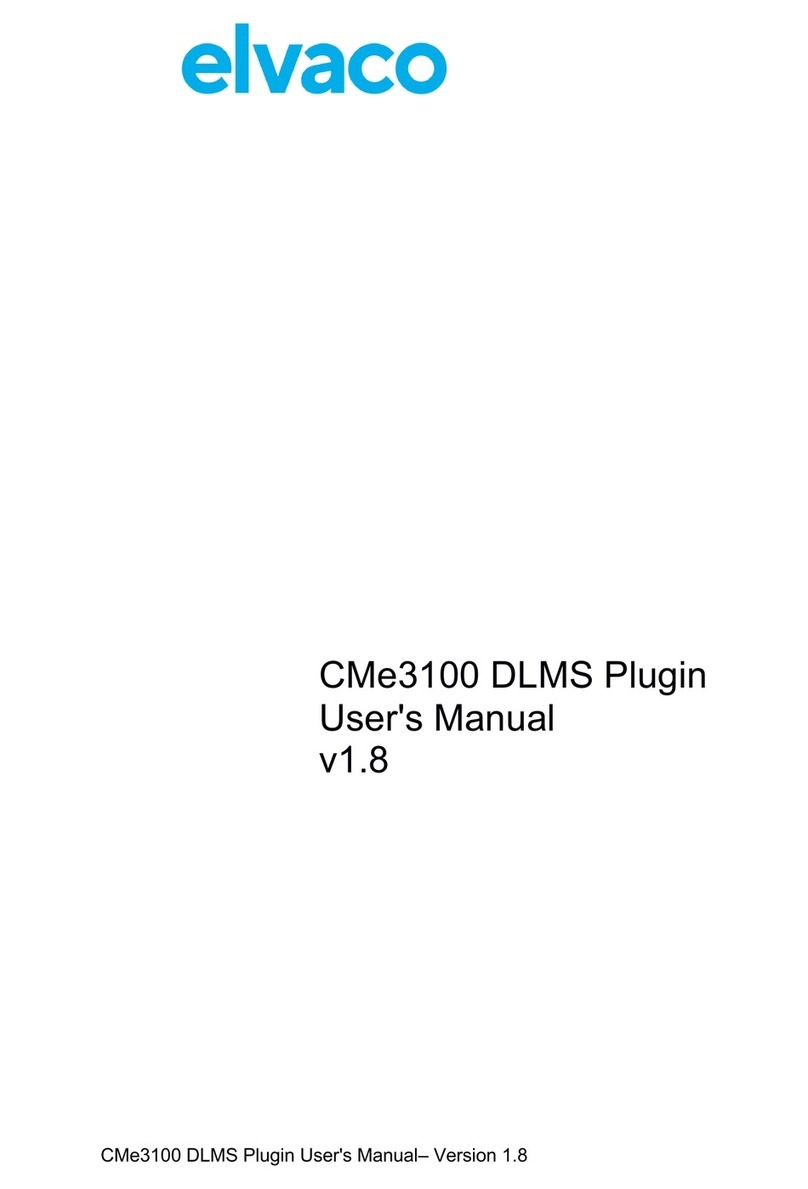
Elvaco
Elvaco CMe3100 User manual

Elvaco
Elvaco CMi4110 User manual
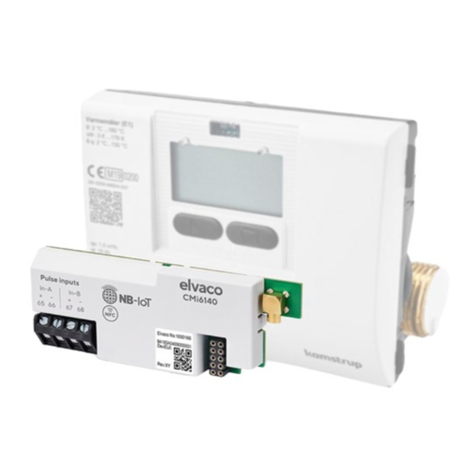
Elvaco
Elvaco CMi6140 User manual
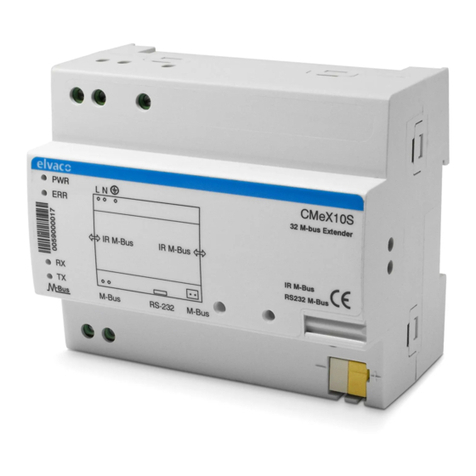
Elvaco
Elvaco CMeX10S Installation guide
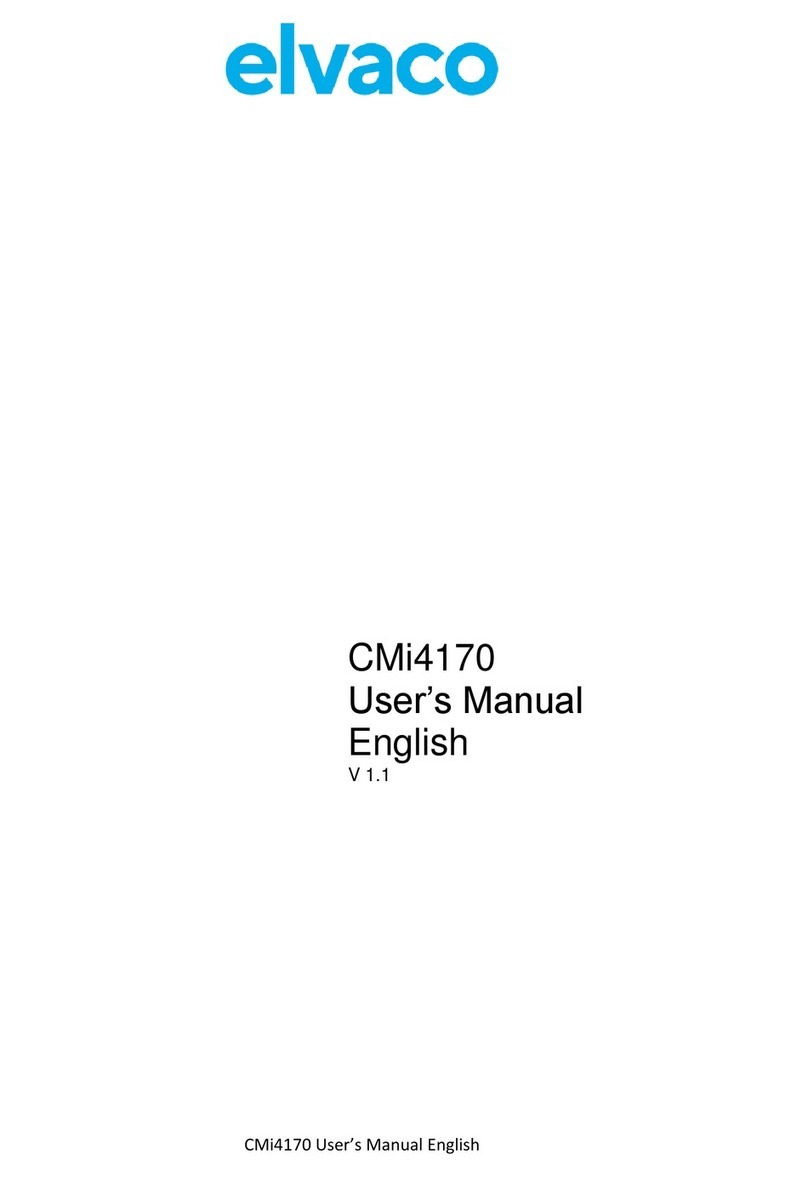
Elvaco
Elvaco CMi4170 User manual
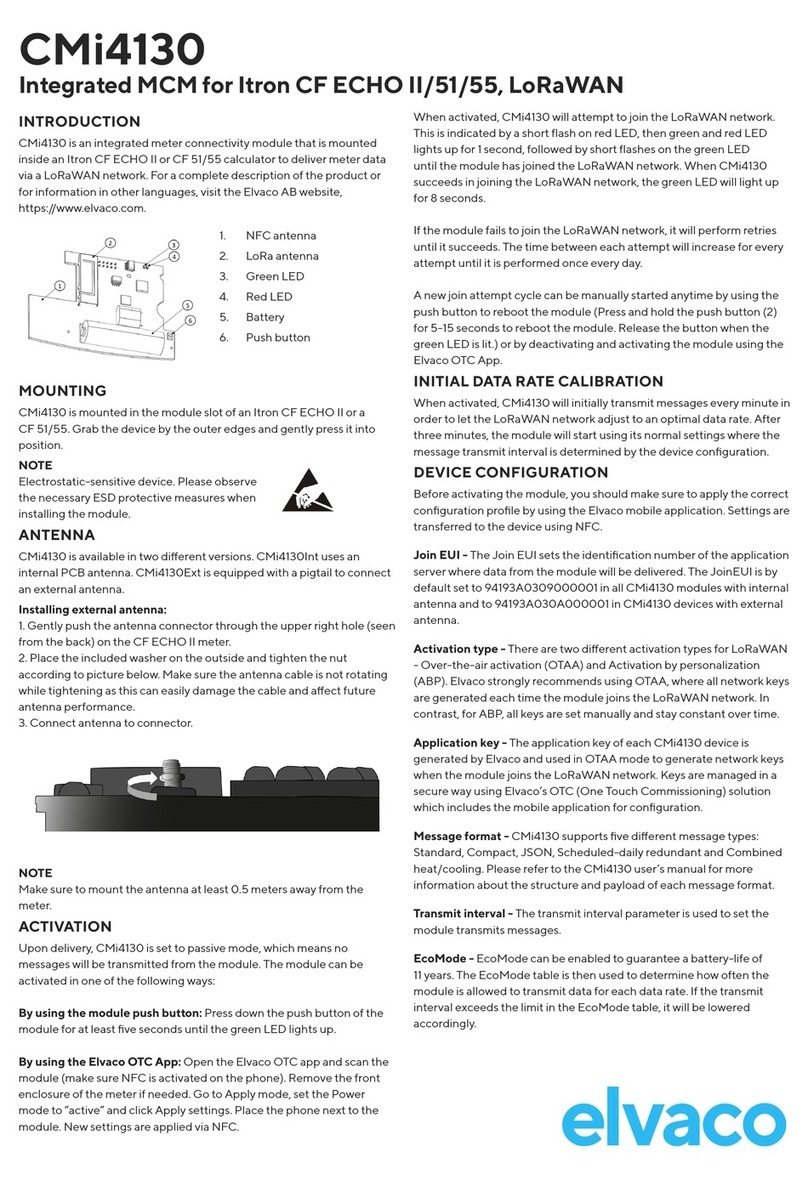
Elvaco
Elvaco CMi4130 User manual
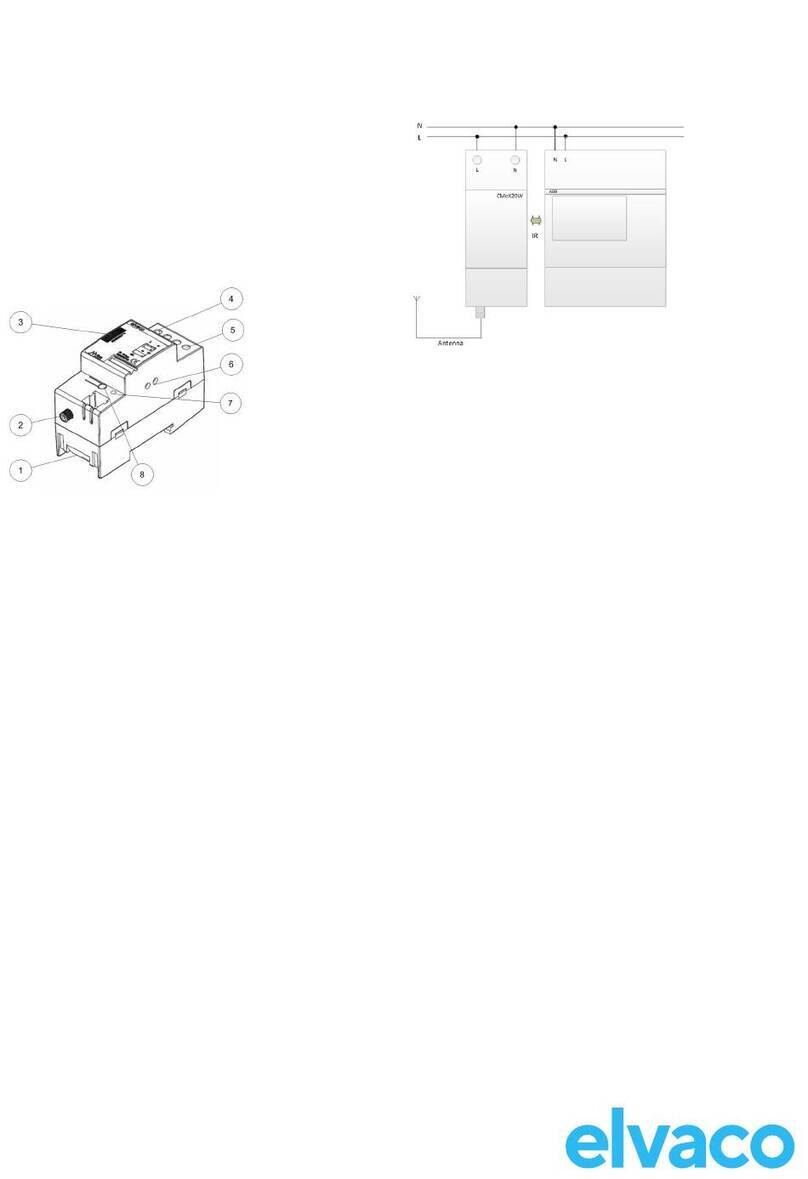
Elvaco
Elvaco CMeX20w User manual

Elvaco
Elvaco CMi4170 User manual
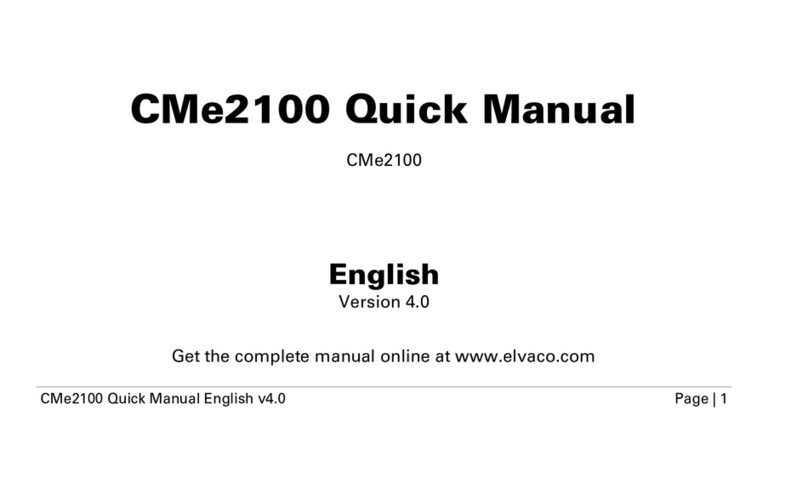
Elvaco
Elvaco CMe2100 Installation guide
Popular Measuring Instrument manuals by other brands
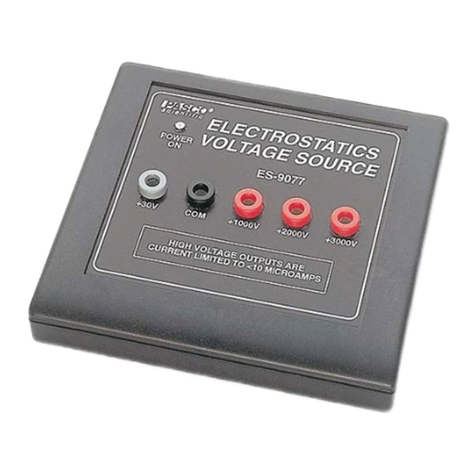
PASCO
PASCO ES-9077 instruction sheet
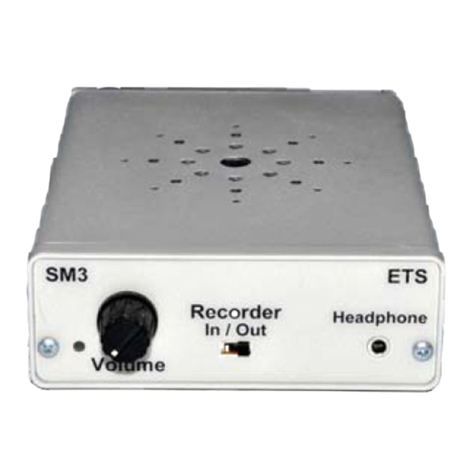
ETS
ETS SM3 instructions
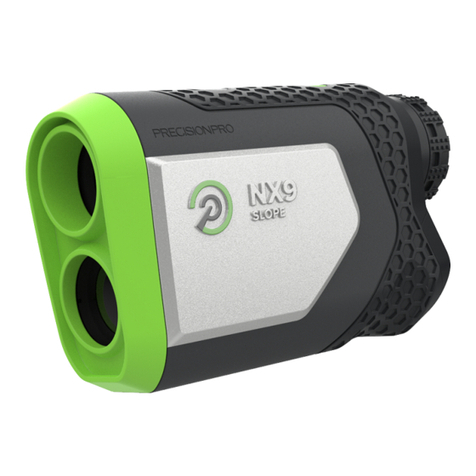
Precision Pro
Precision Pro NX9 product manual
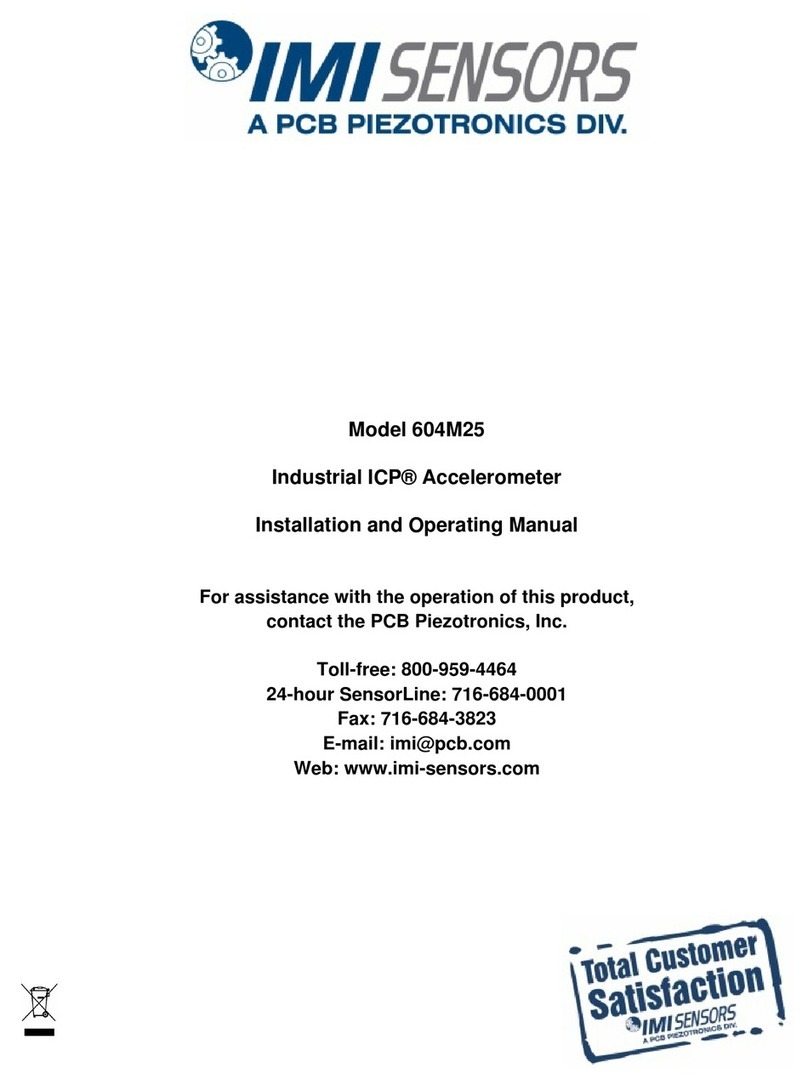
PCB Piezotronics
PCB Piezotronics IMI SENSORS 604M25 Installation and operating manual
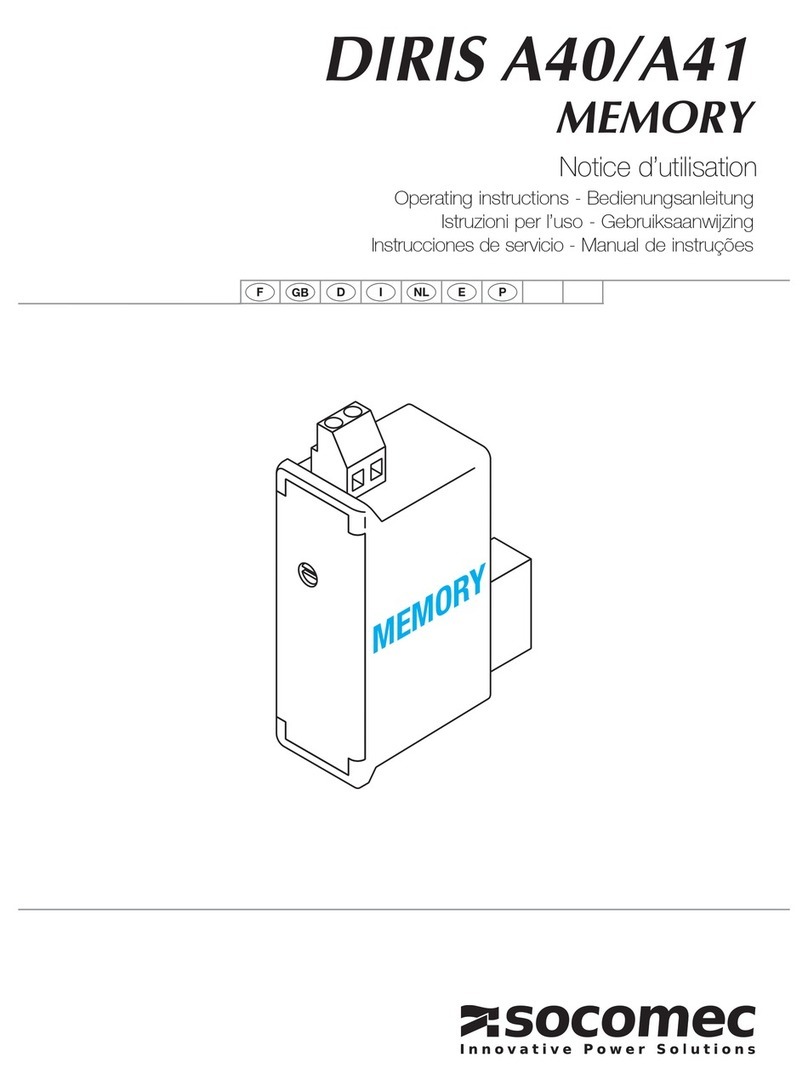
socomec
socomec DIRIS A40 operating instructions
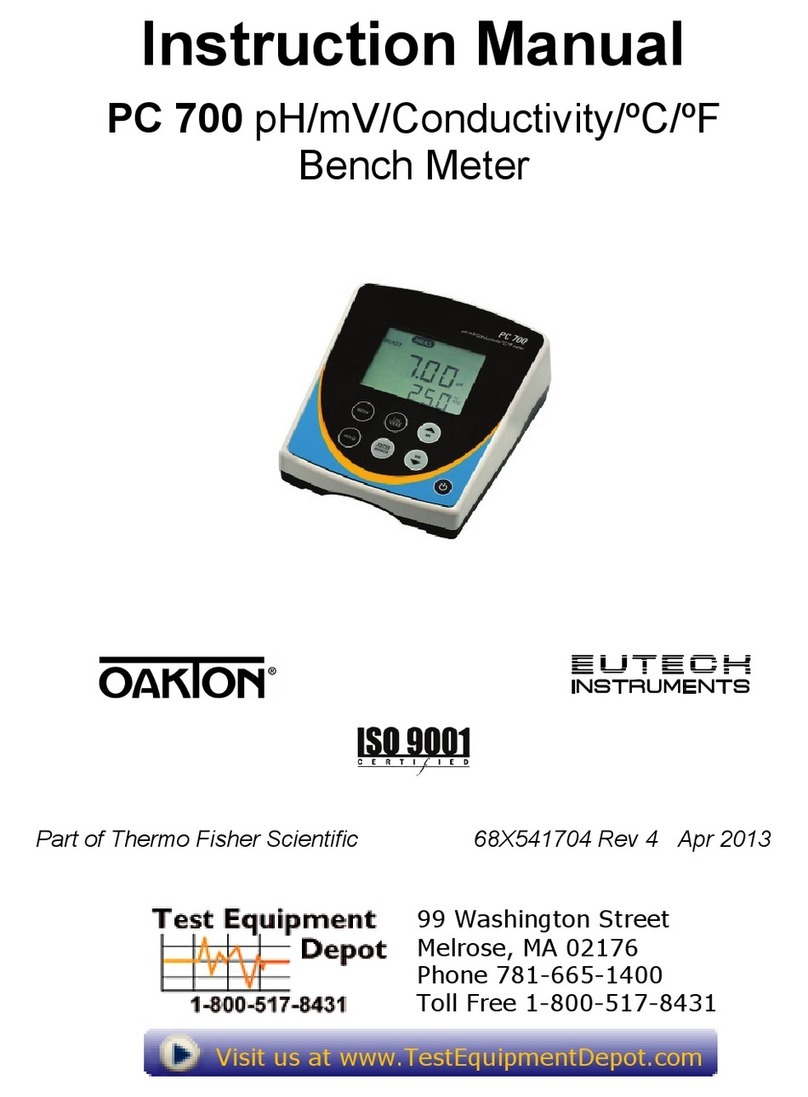
EUTECH INSTRUMENTS
EUTECH INSTRUMENTS OAKTON WD-35413-21 instruction manual


